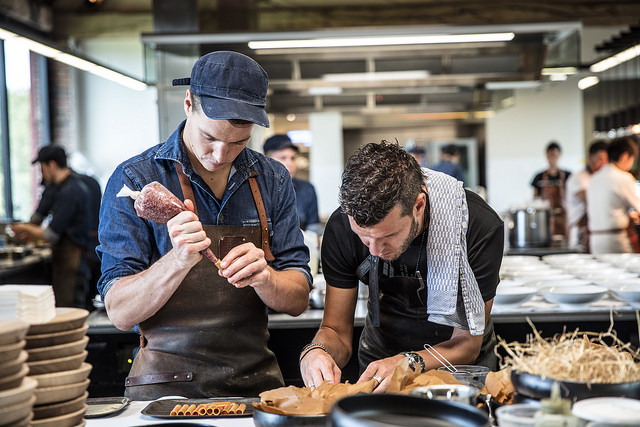Unlock the Magic in Your Story Now
Get the Free 20 questions to Ask Before Launching Your Idea workbook when you sign up for occasional updates.
Get the Free 20 questions to Ask Before Launching Your Idea workbook when you sign up for occasional updates.
Done Right Is Better Than Perfect
filed in Marketing, Storytelling, Strategy
 Last week, someone—a person with a business, a living to make and maybe mouths to feed, took time to find the contact form on my website to send me this message.
Last week, someone—a person with a business, a living to make and maybe mouths to feed, took time to find the contact form on my website to send me this message.
Hello
Are you an online marketer, do you own a business or businesses?
I was just looking at your website.
Do you want real visitors to your website or SEO for social marketing?
-Visitors Come From Facebook
-Real Traffic Will Come From the USA and Europe 24/7
-This Is Lifetime Traffic
==Just for reference, you can see our work here== [hyperlink removed]
Behind this message are business goals, hopes and dreams that have little chance of being realised because the sender opted to take a shortcut.
You’ve probably heard Sheryl Sandberg’s sage advice to entrepreneurs; ‘Done is better than perfect’. I think we need to qualify those words. Done right is better than perfect. If you haven’t got time to do the groundwork to tell the right story to the right person, then that’s a wasted opportunity. Your work is worthy of the effort it takes to go the long way around.
Image by US Embassy
Share this article
The Difference Between Good And Great
 The tiny Italian restaurant in Carlton is in full swing. It’s 6 pm, and a couple of experienced chefs are cranking out meals. The kitchen is a well-oiled machine, the oven is at capacity, as diners and Uber Eats drivers converge at once. The food is good. It’s just not great—unlike the food served at the Italian place we recently discovered in Auckland.
The tiny Italian restaurant in Carlton is in full swing. It’s 6 pm, and a couple of experienced chefs are cranking out meals. The kitchen is a well-oiled machine, the oven is at capacity, as diners and Uber Eats drivers converge at once. The food is good. It’s just not great—unlike the food served at the Italian place we recently discovered in Auckland.
On the face of it, there’s little to differentiate the chefs in the two restaurants. Both teams work mostly silently and efficiently. They are well prepared, and everyone understands the role they play in making sure diners leave sated and satisfied. But there’s one thing the chefs in Auckland do that makes all the difference. In Carlton, nothing is tasted before it’s plated. In Auckland, the chefs taste everything without exception before they plate it. They are making a hundred micro-decisions about how to delight their customers every few minutes and adjusting as they go. That single act means they have to put themselves in the diner’s seat for a second. They have to imagine what it will feel like to experience their product. And that makes all the difference.
Good becomes great when we put the customer at the centre of everything we do.
Image by visitflanders
Share this article
Attention Is A Byproduct Of Affinity.
filed in Marketing, Storytelling
 The truest words ever spoken about storytelling were those of one of the greatest storytellers of our generation. J.K. Rowling once said—’No story lives unless someone wants to listen.’
The truest words ever spoken about storytelling were those of one of the greatest storytellers of our generation. J.K. Rowling once said—’No story lives unless someone wants to listen.’
As people who are anxious to change the world, what we try to do is make people listen. But there’s another equally important truth about storytelling that’s often overlooked. No person listens unless they care about what’s being said. Our job then is to tell stories that help people to care first so that they might listen later.
We can’t tell stories that resonate unless we understand the worldview of the people we’re hoping to help or change. We do better when we remember that attention is a byproduct of affinity.
Image by Dima Barsky
Share this article
Victims Of Success
 We’ve all been let down by a business we were loyal to or disappointed by a product we once loved. When we dissect what happened, it’s often possible to trace the missteps to a single source. Thriving businesses become victims of their success, and great products become mediocre when the people who built them forget how they got from there to here.
We’ve all been let down by a business we were loyal to or disappointed by a product we once loved. When we dissect what happened, it’s often possible to trace the missteps to a single source. Thriving businesses become victims of their success, and great products become mediocre when the people who built them forget how they got from there to here.
No matter how successful you become, the often intangible qualities that differentiated you in the beginning, will continue to be what keeps customers coming back.
Image by pkhamre
Share this article
The Forgotten Power Of The Single Interaction
 On a recent trip to Waiheke Island with my husband, we stopped a bus that wasn’t going our way. The driver told us to hop on anyway, and he’d take us to where we could catch a bus that would get us to where we wanted to go. Then, wait for it—he radioed ahead to the driver of that bus to let her know he had a couple of passengers on board who needed to catch her bus. She was waiting for us at the depot when we got there.
On a recent trip to Waiheke Island with my husband, we stopped a bus that wasn’t going our way. The driver told us to hop on anyway, and he’d take us to where we could catch a bus that would get us to where we wanted to go. Then, wait for it—he radioed ahead to the driver of that bus to let her know he had a couple of passengers on board who needed to catch her bus. She was waiting for us at the depot when we got there.
The driver of the wrong bus could simply have done his job. He could have told us to wait for the next bus that was due in twenty minutes. He could have decided that in the scheme of things this one interaction was insignificant. He chose to think otherwise.
In our globalised, digital world, as we try to hustle our way to making a bigger impact, it’s easy to forget that change doesn’t have to happen at scale. Just as a single well-placed domino in a domino run can knock all the dominos down one-by-one, we each have the power to change a day or a life in a single interaction. We don’t have to reach everyone all at once.
Image by Nina
Share this article
From Average To Exceptional
 The menu at Fumi’s restaurant is identical to every other sushi restaurant in town. The ingredients come from the same fish market, and the prices are similar. On the face of it, there’s nothing to set the restaurants apart and no reason for a diner to favour one over another. The difference is only apparent after you’ve eaten at Fumi’s place. It isn’t just what the chefs cook that creates a line out the door every lunchtime. It’s how it’s made and the way it’s served that changes everything.
The menu at Fumi’s restaurant is identical to every other sushi restaurant in town. The ingredients come from the same fish market, and the prices are similar. On the face of it, there’s nothing to set the restaurants apart and no reason for a diner to favour one over another. The difference is only apparent after you’ve eaten at Fumi’s place. It isn’t just what the chefs cook that creates a line out the door every lunchtime. It’s how it’s made and the way it’s served that changes everything.
It’s hard to put your finger on what makes an experience memorable, but that doesn’t stop us and marketers the world over trying to do it because we want to recreate that kind of magic for our clients and customers.
What takes something from average to exceptional is surprisingly simple and consistently hard to do. The attitude of everyone who touches the product and creates the experience is what matters most in the end. When the people who make, serve and sell things believe and act as if it’s a privilege to do the work, they can’t help but create better experiences.
We do work that matters by believing that it matters.
Image by Jeena Paradies
Share this article
Who Exactly Is It For?
 Alec has been on the road since 4 am. He’s picked up three fares all morning. The arrival of Uber has hit him and other Melbourne taxi drivers hard. According to Alec, the taxi industry has seen a 40% decline. He says he earned as much twenty years ago as he does today. He complains bitterly about the regulators and his bosses—now in his fifties, he reckons he’s too old to switch jobs.
Alec has been on the road since 4 am. He’s picked up three fares all morning. The arrival of Uber has hit him and other Melbourne taxi drivers hard. According to Alec, the taxi industry has seen a 40% decline. He says he earned as much twenty years ago as he does today. He complains bitterly about the regulators and his bosses—now in his fifties, he reckons he’s too old to switch jobs.
Joey hasn’t been driving as long as Alec. But he understands why many riders prefer the convenience of Uber. He knew as soon as the ride-hailing app arrived in Australia there was no way he could compete on speed or price. So he made a conscious decision not to try being faster or cheaper than Uber, but to find and serve a group of riders he could delight instead. Joey operates a small airport transfer car service. He charges the same rate as a taxi but provides a more personal, upmarket service with the intention of attracting repeat business clients. Joey’s strategy is working. He doesn’t have to drive the city streets finding customers for his service because he’s intentionally designed a service for his customers.
The more deliberate and specific we are about who we want to serve, the better our products and services will be.
Image by Matthias Ripp
Share this article
Becoming The Obvious Choice
 Today you will repeatedly engage in the process of persuasion. You will try to engage with someone in a way that convinces them to change their opinions, choices or actions—their mind or their behaviour. You will aim to persuade them that you or your product are the obvious choice.
Today you will repeatedly engage in the process of persuasion. You will try to engage with someone in a way that convinces them to change their opinions, choices or actions—their mind or their behaviour. You will aim to persuade them that you or your product are the obvious choice.
We tend to think that persuasion is simply about laying out well-reasoned arguments that help the best or most obvious choice bubble to the surface. But ‘best’ is subjective and variable because it’s dependent upon the circumstances surrounding the moment when people are invited to change or choose.
The work of psychologists like Robert Cialdini into the science of persuasion demonstrates that it’s not just what we say that counts, it’s also how and when we say it that matters. A hotel can get more guests to reuse towels by subtly changing the script on the sign in the bathroom. A waiter can increase his tips by offering mints along with the bill.
Becoming the obvious choice isn’t only about clearly laying out benefits to the prospective customer. It’s about understanding the context in which the decision is being made.
Eliciting a choice or change isn’t only or always about making it more obvious.
Image by bassnroll
Share this article
Should You Simplify Your Sales Script?
filed in Marketing, Storytelling
 There’s a shop half-way down Smith Street that sells just about everything. Whatever you might need from a hammer to a cigarette lighter, a birthday card to an egg slicer they’ve got it. It’s the kind of shop that usually encourages browsing more than buying, where people wander around aimlessly ‘just looking’. But in this shop, an unusually high percentage of people are converted from browsers to buyers.
There’s a shop half-way down Smith Street that sells just about everything. Whatever you might need from a hammer to a cigarette lighter, a birthday card to an egg slicer they’ve got it. It’s the kind of shop that usually encourages browsing more than buying, where people wander around aimlessly ‘just looking’. But in this shop, an unusually high percentage of people are converted from browsers to buyers.
The shop owner stands behind the checkout at the entrance to the shop making a point of greeting every customer. This is nothing new. We see that happening every day in retailers around the world. What’s different in this situation is what happens next, partly by accident, rather than by design. Because English is her second language, the owner has to choose her words carefully so she can get a response that helps her to understand how to help prospective customers. The indirect approach typically used in other retail environments won’t work for her. She simplifies her script using a more direct approach, asking every person the same question as they enter the shop.
‘Are you looking for something?’
The question elicits a more useful response than the typical, ‘How can I help you?’ It focuses the customer on his original intention and enables the shop owner to help him navigate the Aladdin’s cave of products.
Good salespeople help customers to do the thing they wanted to do. Often in our desire to empower the customer to make the right choice we prevent them from choosing at all. In some situations, the direct approach is the right one.
Image by Brian Yap
Share this article
The Downside Of Competing For Customers
 The boardroom was ready. We each had a bottle of French sparkling water, a notebook and pen next to our seat. Delicious herbal tea and snacks were served on our arrival. We were meeting to discuss how best to tell a story that resonated with the client’s customers before the launch of a new marketing campaign next season. The marketing team’s carefully prepared presentation was locked and loaded, and examples of their past promotions had been laid out down the middle of the long boardroom table, alongside those of their competitors.
The boardroom was ready. We each had a bottle of French sparkling water, a notebook and pen next to our seat. Delicious herbal tea and snacks were served on our arrival. We were meeting to discuss how best to tell a story that resonated with the client’s customers before the launch of a new marketing campaign next season. The marketing team’s carefully prepared presentation was locked and loaded, and examples of their past promotions had been laid out down the middle of the long boardroom table, alongside those of their competitors.
The team presented data about the previous campaign’s performance relative the competition. They knew exactly what their competitors’ strategy had been and how much revenue each company had generated. They compared the different strategies in great detail. They outlined the targets they wanted to hit. But not once throughout the entire presentation did they question what their customer wanted. The customer barely got a mention. This company is not alone in neglecting to make room for customers at the table.
In our race to compete for a slice of the market, we have become fearfully reactive to the marketplace, instead of being bravely responsive to the people we intended to serve. We may have forgotten our customers, but it’s not too late to fix this. We can’t begin to be something to our customers without first understanding who we are and who we intend to become.
Image by freeimage4life